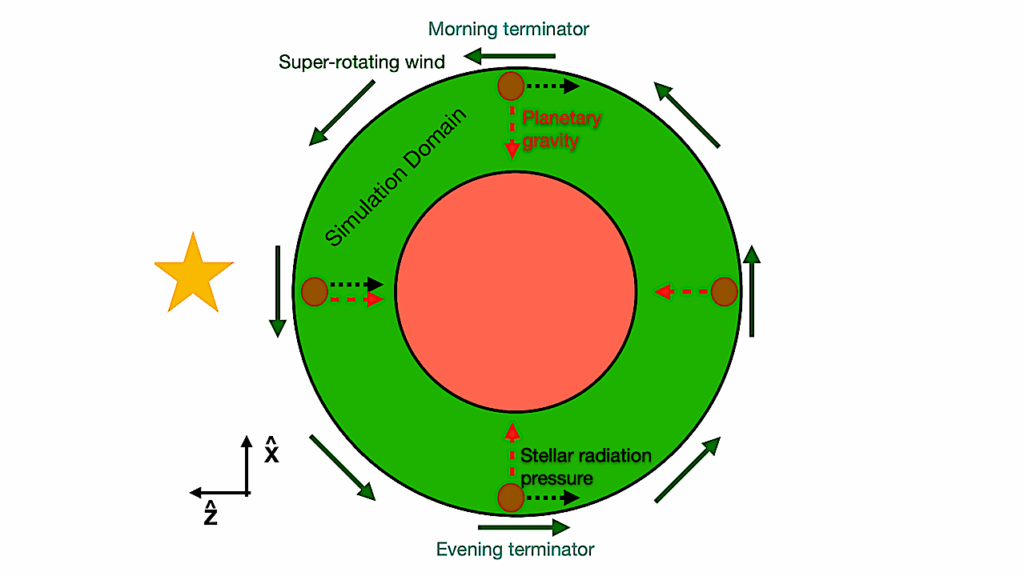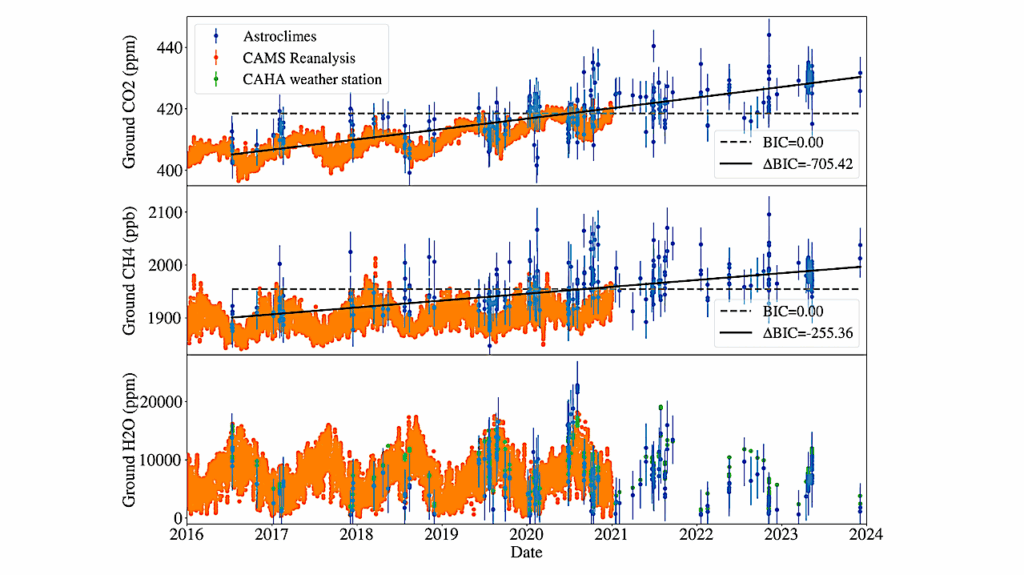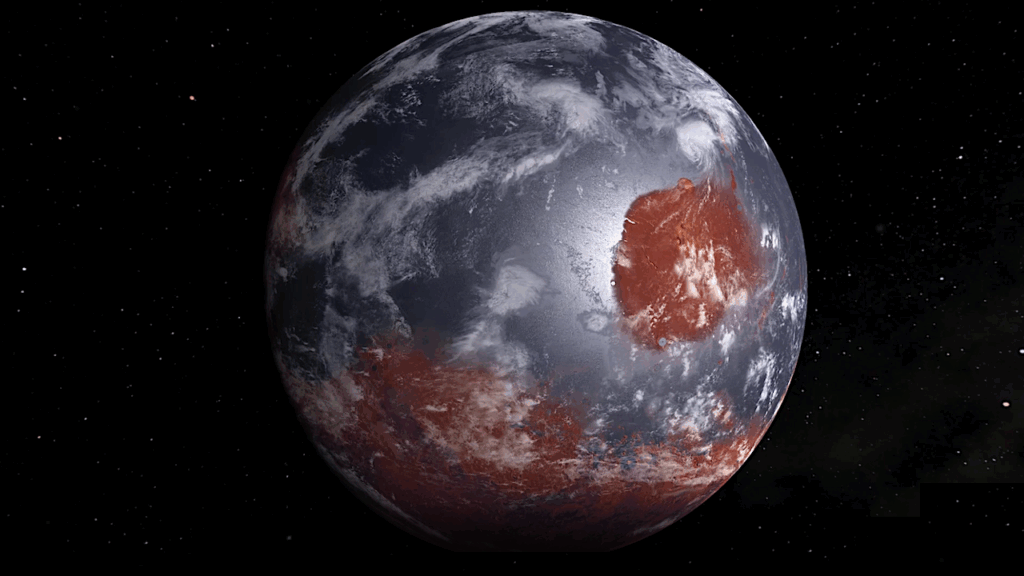Exoplanets Are Not Water Worlds

An exoplanet orbiting a dwarf star 124 light-years from Earth made headlines around the world in April 2025. Researchers at the University of Cambridge reported that planet K2-18b could be a marine world with a deep, global ocean teeming with life.
However, a study now shows that so-called sub-Neptunes such as K2-18b are highly unlikely to be worlds dominated by water and that conditions there are far from conducive to life. “Water on planets is much more limited than previously believed,” notes Caroline Dorn, professor of exoplanets at ETH Zurich.
The study was conducted under the leadership of ETH Zurich, in collaboration with researchers from the Max Planck Institute for Astronomy in Heidelberg and the University of California in Los Angeles. K2-18b is larger than Earth but smaller than Neptune, placing it in a class of planets that do not exist in our solar system.
However, observations show that they are common in outer space. Some of these sub-Neptunes were probably formed far away from their central star, beyond the so-called snow line where water freezes into ice and later migrates inwards.
Until now, it had been assumed that some of these planets were able to accumulate particularly large amounts of water during their formation and now harbour deep, global oceans beneath a hydrogen-rich atmosphere. Experts refer to these as Hycean planets: a combination of “hydrogen” and “ocean”.
Factoring in the chemistry
“Our calculations show that this scenario is not possible,” says Dorn. This is because a fundamental vulnerability of previous studies was that they ignored any chemical coupling between the atmosphere and the interior of the planet. “We have now factored in the interactions between the planet’s interior and its atmosphere,” explains Aaron Werlen, a researcher on Dorn’s team and lead author of the study which was published in The Astrophysical Journal Letters.
The researchers assume that, in an early stage of their formation, the sub-Neptunes went through a phase in which they were covered by a deep, hot magma ocean. A shell of hydrogen gas ensured that this phase was maintained for millions of years.
“In our study, we investigated how the chemical interactions between magma oceans and atmospheres affect the water content of young sub-Neptune exoplanets,” says Werlen.
To do this, the researchers used an existing model that describes planetary evolution over a specific period of time. They combined this with a new model that calculates the chemical processes that take place between the gas in the atmosphere, and the metals and silicates in the magma.
Water disappearing into the interior
The researchers calculated the chemical equilibrium state of 26 different components for a total of 248 model planets. The computer simulations showed that the chemical processes destroy most H2O water molecules. Hydrogen (H) and oxygen (O) attach themselves to metallic compounds, and these largely disappear into the planet’s core.
Even though the accuracy of such calculations has some limitations, the researchers are convinced by the results. “We focus on the major trends and can clearly see in the simulations that the planets have much less water than they originally accumulated,” explains Werlen. “The water that actually remains on the surface as H2O is limited to a few per cent at most.”
In an earlier publication, Dorn’s group was already able to show how most of a planet’s water is hidden in the interior. “In the current study, we analysed how much water there is in total on these sub-Neptunes,” explains the researcher, “According to the calculations, there are no distant worlds with massive layers of water where water makes up around 50 percent of the planet’s mass, as was previously thought. Hycean worlds with 10-90 percent water are therefore very unlikely.”
This makes the search for extra-terrestrial life more difficult than hoped for. Conditions conducive to life, with sufficient liquid water on the surface, are likely to exist only on smaller planets, which will probably be observable only with observatories even better than the James Webb Space Telescope.
Earth not a special case
Dorn finds the role of our Earth particularly exciting in light of the new calculations which show that most distant planets have similar water content to our planet. “The Earth may not be as extraordinary as we think. In our study, at least, it appears to be a typical planet,” she says.
The researchers were also surprised by a seemingly paradoxical difference: the planets with the most water-rich atmospheres are not those that have accumulated the most ice beyond the snow line, but rather planets that formed within the snow line. On these planets, the water did not come from ice crystals, but was produced chemically when hydrogen in the planetary atmosphere reacted with oxygen from the silicates in the magma ocean to form H2O molecules.
“These findings challenge the classic link between ice-rich formation and water-rich atmospheres. Instead, they highlight the dominant role of the equilibrium between magma ocean and atmosphere in shaping planetary composition,” concludes Werlen. This will have far-reaching implications for theories of planetary formation and the interpretation of exoplanetary atmospheres in the age of the James Webb Telescope

Comparison between the accreted and equilibrated water mass fractions of sub-Neptunes. The black dashed line indicates the 1:1 correlation; in the absence of chemistry, all planets would lie along this line. The gray shaded region denotes the 10–90 wt% water mass fraction range proposed for Hycean planets by N. Madhusudhan et al. (2021). All planets in our sample exhibit significant water depletion following equilibration and fall well below the Hycean threshold. — The Astrophysical Journal Letters
Sub-Neptunes Are Drier Than They Seem: Rethinking the Origins of Water-Rich Worlds, The Astrophysical Journal Letters (open access)
Astrobiology,








